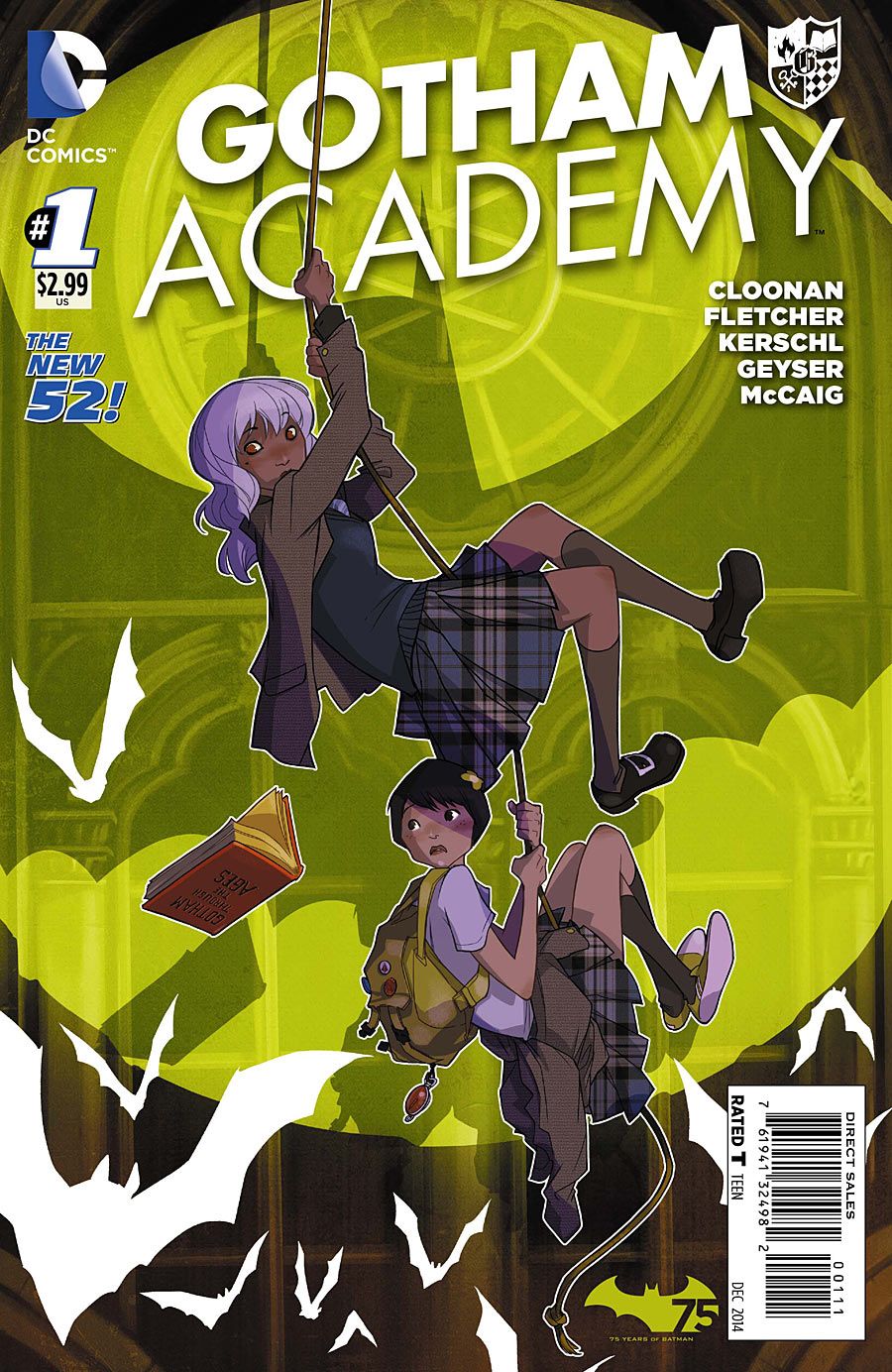Gorgeous, grinning and full of promise, "Gotham Academy" is easily my favorite first issue of the fall. The story of Olive Silverlock's second year at Gotham's most prestigious prep school may not branch out enough from standard teen and high school cliches, but its warmth, world and intriguing setup make this a wonderful first issue regardless.
To start, Karl Kerschl, Geyser and Dave McCaig create an inviting, explorable world. From the Hogwarts-meets-Groton architecture to the waffles on the lunch menu, I wanted to walk through the halls of Gotham Academy just to check it all out. Kerschl's lines are simple and a little sharp, with manga influences in the hair and upturned noses. His style works well here, but with a different colors team, this world could have felt a bit flat. Geyser and McCaig's colors add necessary depth and texture, and they strike a careful, creative balance between the creepy and the comforting. In their hands, Gotham Academy looks like a haunted house, but one that Casper would be okay living in. The slow sunset over the last few pages is my favorite example of this effect; it looks like warm, welcoming...hellfire (?). I also love the unexpected effect they use for the plaid in the uniform skirts, which looks like a textile sample pasted inside the lines.
Style aside, Kerschl's storytelling is also top-notch. His layouts are stacked like the bricks of an old building, all slanted lines and clustered panels. He overlays big backdrops with trapezoidal, circlular, and elliptical panels. When Olive and Maps climb the spiral belltower steps, the reader's eyes also have to wind around the page.
As far as the script is concerned, it becomes obvious early on that Becky Cloonan and Brenden Fletcher will lean heavily on school story cliches. Every character falls handily into a standard type -- the scholarship kid, the mean girl, the old headmaster, the wide-eyed new girl -- and the text does little to add complexity to those designations. Similarly, Olive's life is fitted with all the requisite elements of a teen drama. She writes lines like, "I feel like I'm stuck inside these old buildings...with people don't understand me...But there's nowhere else for me to go."
However, the appeal here is not necessarily in the characters -- who, likeable as they are, all feel like I've seen them before -- but in their relationships to one another. If the archetypes are obvious, the interactions are not.
This is chiefly because, among all the cliches, "Gotham Academy" gives its female, teenage protagonist the sort of credit that that demographic so rarely receives in fiction. It trusts her to self-assess. After shlumping around in a malaise for half the issue, Olive recognizes that she's been unfair to the people around her -- and she doesn't need a mentor or an outside motivation to do so. She does it all herself, by asking who she wants to be and comparing it to who she's been acting like.
For instance, when her roommate Lucy is first introduced, she's merely a nag, asking Olive to clean the room and shouting, "I liked you a lot better last year, when you were normal!" The next time she appears, she's frightened and needs comforting. Without a pause for apologies or awkward reconciliation, Olive inspects the room and declares it free of ghosts, and they end the scene giggling with one another. The use of unspoken apologies in this issue lets Olive demonstrate her friendship with actions, not words, and it reads wonderfully. As with Lucy, her and Maps' adventure in the belfry isn't as important as how they end up there.
"Gotham Academy" #1 is a treasure of a first issue, but to become a treasure of a series, it will need to give its characters some more complexity going forward. It may not be a great expansion of teen dramas, but it's shaping up to be a great expansion of the Batverse.

